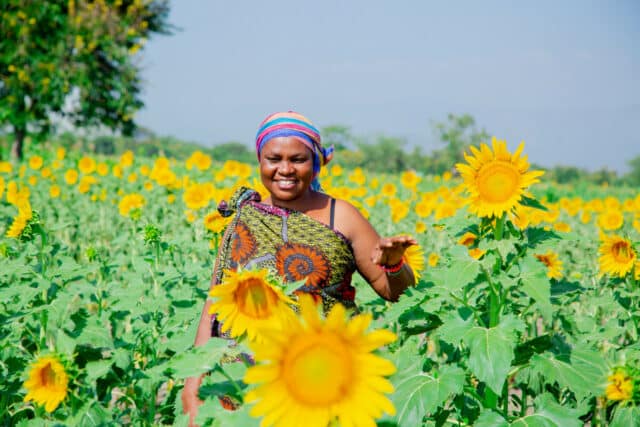Programme
Complete
Climate-smart agriculture
Country
Ethiopia
Running from
2014-2019
People reached
40,485 households
Key focus areas
Act on climate change
Increase incomes
Protect ecosystems
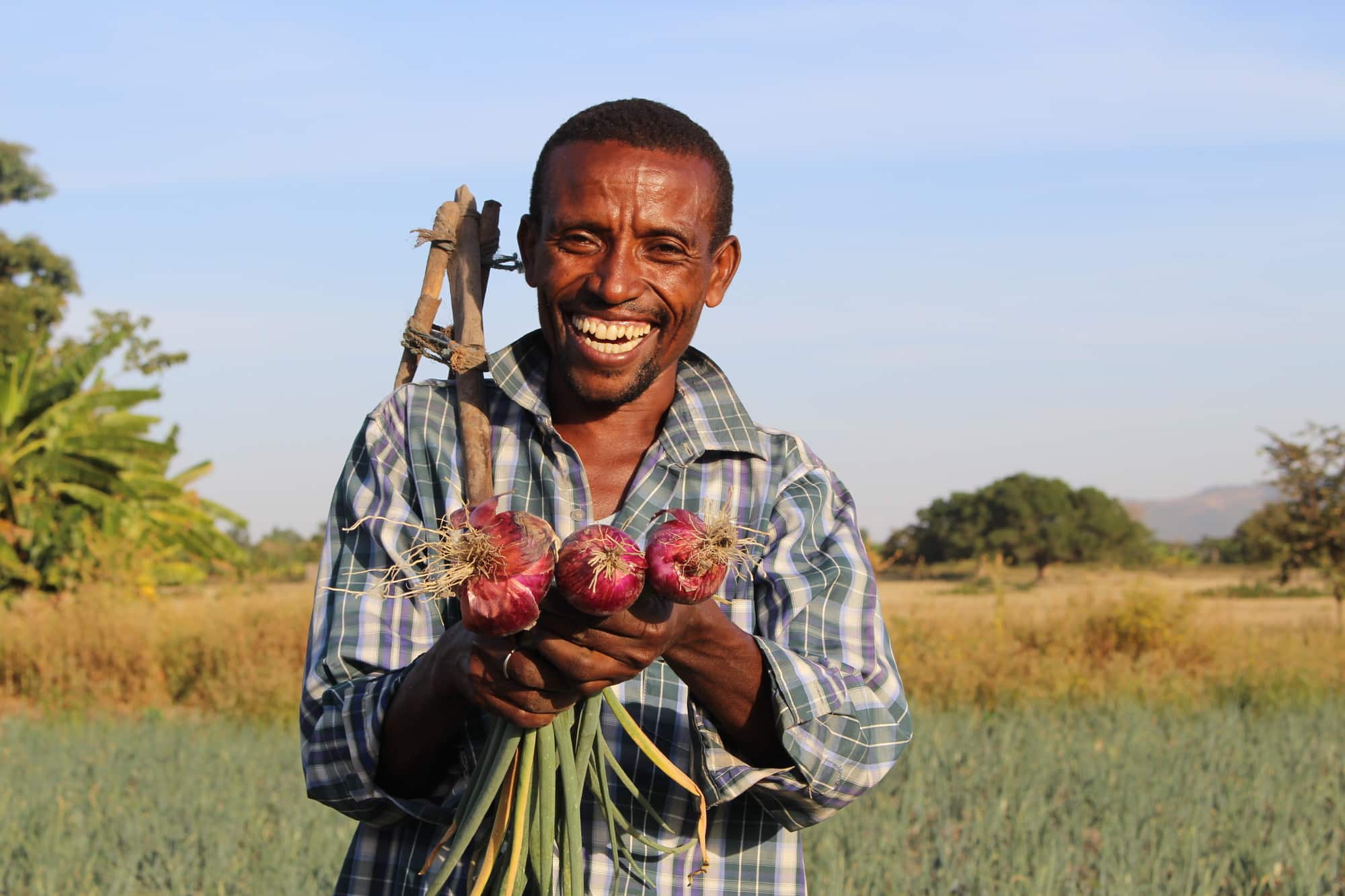
In many regions in Ethiopia, soil degradation and damage to natural resources caused by climate change is threatening farmers’ livelihoods and affecting long-term food security.
40,485
households benefitted from climate-smart agriculture initiatives.
Jointly managed by a consortium of four NGOs: Farm Africa, SOS Sahel Ethiopia, Self Help Africa and Vita, the project promoted climate-smart agriculture (CSA) to help farmers to manage their farm resources in ways which can protect ecosystems and reduce agriculture’s contribution to climate change. The five-year project aimed to alleviate poverty and build resilient, sustainable livelihoods in Ethiopia’s SNNP and Oromia regions. The project worked with 40,485 households, with a particular focus on women, children and young people without land.
CSA also aims to help farmers boost their profits, supporting business growth and the development of stronger value chains. By promoting diversification and the growth of cash crops such as haricot beans, this project encouraged agricultural intensification which is both profitable and environmentally-friendly.
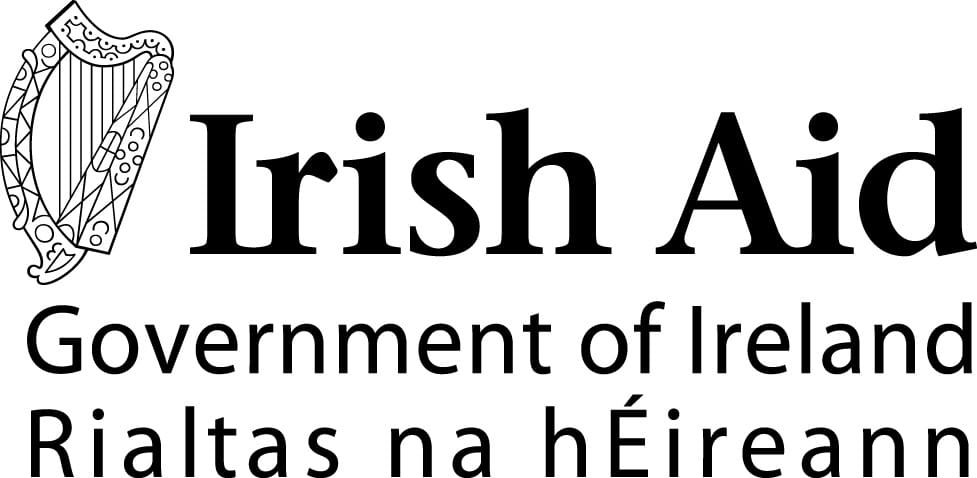
Country
Ethiopia
Key focus areas
Act on climate change
Increase incomes
Protect ecosystems
Climate-smart agriculture factsheet
An overview of Farm Africa’s climate-smart agriculture project in Ethiopia.
Download (350.67kb)
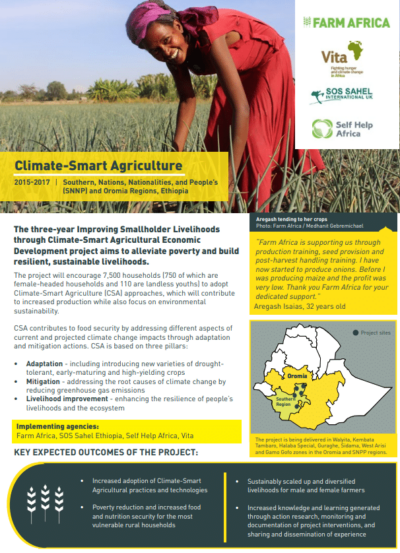
Country
Ethiopia
Key focus areas
Act on climate change
Increase incomes
Protect ecosystems
Country
Ethiopia
Key focus areas
Act on climate change
Boost productivity
Increase incomes
Small-scale irrigation
This booklet is one of a series of seven focusing on the key components of the five-year Improving Smallholder Livelihoods through Climate-Smart Agricultural Economic Development project. Funded by Irish Aid, and implemented by a consortium of SOS Sahel Ethiopia, Self Help Africa, Vita and Farm Africa, the project aimed to alleviate poverty and build resilient, sustainable livelihoods in Ethiopia’s SNNP and Oromia regions.
Download (624.5kb)
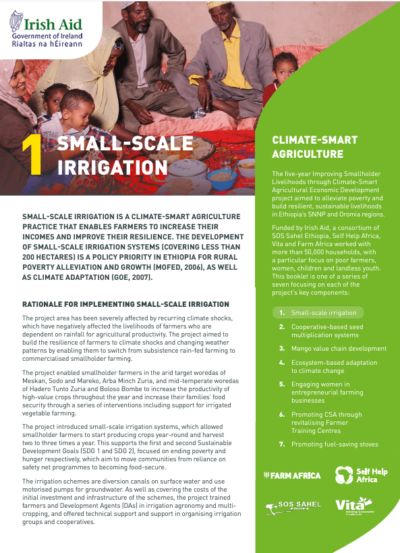
Country
Ethiopia
Key focus areas
Act on climate change
Boost productivity
Increase incomes
Country
Ethiopia
Key focus areas
Act on climate change
Boost productivity
Increase incomes
Cooperative-based seed multiplication systems
This booklet is one of a series of seven focusing on the key components of the five-year Improving Smallholder Livelihoods through Climate-Smart Agricultural Economic Development project. Funded by Irish Aid, and implemented by a consortium of SOS Sahel Ethiopia, Self Help Africa, Vita and Farm Africa, the project aimed to alleviate poverty and build resilient, sustainable livelihoods in Ethiopia’s SNNP and Oromia regions.
Download (600.22kb)
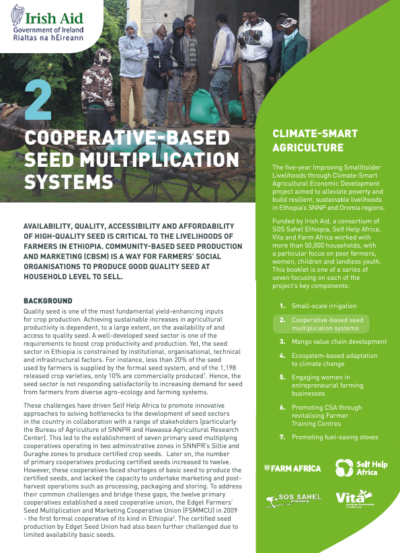
Country
Ethiopia
Key focus areas
Act on climate change
Boost productivity
Increase incomes
Country
Ethiopia
Key focus areas
Act on climate change
Boost productivity
Increase incomes
Mango Value Chain Development
This booklet is one of a series of seven focusing on the key components of the five-year Improving Smallholder Livelihoods through Climate-Smart Agricultural Economic Development project. Funded by Irish Aid, and implemented by a consortium of SOS Sahel Ethiopia, Self Help Africa, Vita and Farm Africa, the project aimed to alleviate poverty and build resilient, sustainable livelihoods in Ethiopia’s SNNP and Oromia regions.
Download (917.97kb)
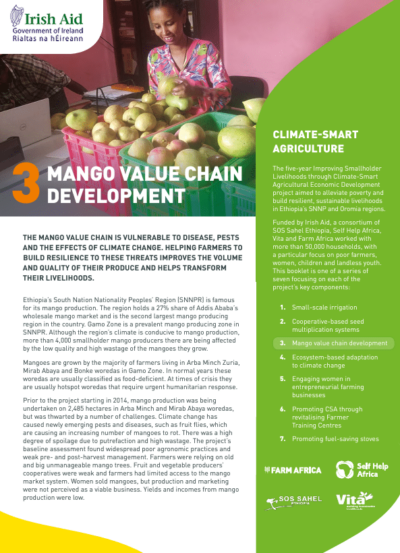
Country
Ethiopia
Key focus areas
Act on climate change
Boost productivity
Increase incomes
Country
Ethiopia
Key focus areas
Act on climate change
Boost productivity
Increase incomes
Ecosystem-based adaptation to climate change
This booklet is one of a series of seven focusing on the key components of the five-year Improving Smallholder Livelihoods through Climate-Smart Agricultural Economic Development project. Funded by Irish Aid, and implemented by a consortium of SOS Sahel Ethiopia, Self Help Africa, Vita and Farm Africa, the project aimed to alleviate poverty and build resilient, sustainable livelihoods in Ethiopia’s SNNP and Oromia regions.
Download (1.4mb)
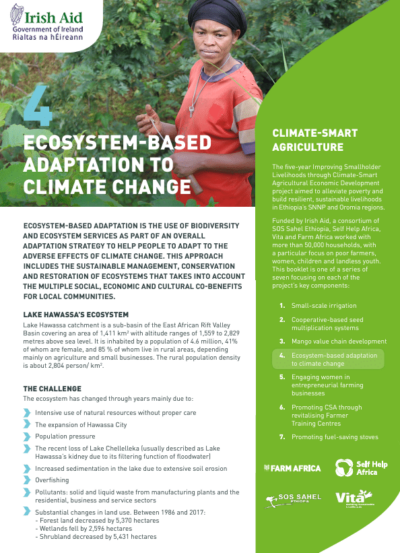
Country
Ethiopia
Key focus areas
Act on climate change
Boost productivity
Increase incomes
Country
Ethiopia
Key focus areas
Act on climate change
Empower women
Increase incomes
Engaging Women in Entrepreneurial Farming Businesses
This booklet is one of a series of seven focusing on the key components of the five-year Improving Smallholder Livelihoods through Climate-Smart Agricultural Economic Development project. Funded by Irish Aid, and implemented by a consortium of SOS Sahel Ethiopia, Self Help Africa, Vita and Farm Africa, the project aimed to alleviate poverty and build resilient, sustainable livelihoods in Ethiopia’s SNNP and Oromia regions.
Download (779.71kb)

Country
Ethiopia
Key focus areas
Act on climate change
Empower women
Increase incomes
Country
Ethiopia
Key focus areas
Act on climate change
Boost productivity
Increase incomes
Promoting climate-smart agriculture through revitalising Farmer Training Centres
This booklet is one of a series of seven focusing on the key components of the five-year Improving Smallholder Livelihoods through Climate-Smart Agricultural Economic Development project. Funded by Irish Aid, and implemented by a consortium of SOS Sahel Ethiopia, Self Help Africa, Vita and Farm Africa, the project aimed to alleviate poverty and build resilient, sustainable livelihoods in Ethiopia’s SNNP and Oromia regions.
Download (1.4mb)
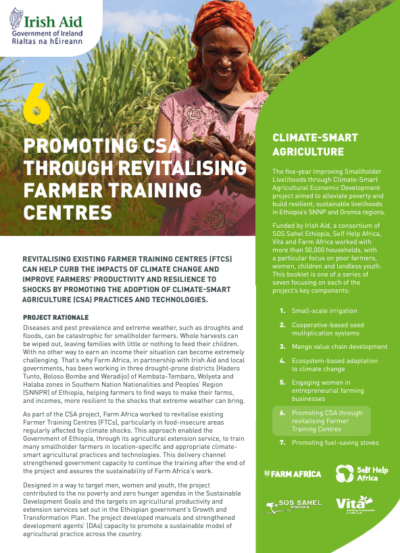
Country
Ethiopia
Key focus areas
Act on climate change
Boost productivity
Increase incomes
Country
Ethiopia
Key focus areas
Act on climate change
Boost productivity
Protect ecosystems
Promoting fuel-saving stoves
This booklet is one of a series of seven focusing on the key components of the five-year Improving Smallholder Livelihoods through Climate-Smart Agricultural Economic Development project. Funded by Irish Aid, and implemented by a consortium of SOS Sahel Ethiopia, Self Help Africa, Vita and Farm Africa, the project aimed to alleviate poverty and build resilient, sustainable livelihoods in Ethiopia’s SNNP and Oromia regions.
Download (1.29mb)
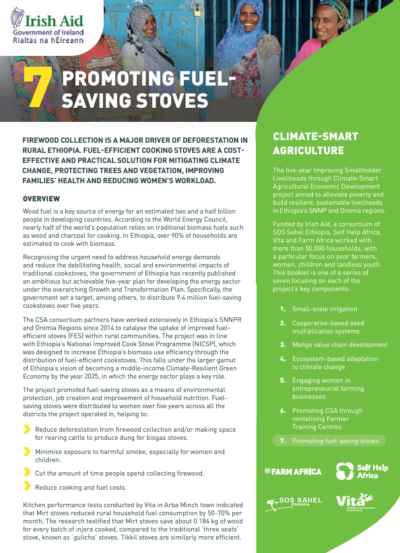
Country
Ethiopia
Key focus areas
Act on climate change
Boost productivity
Protect ecosystems
